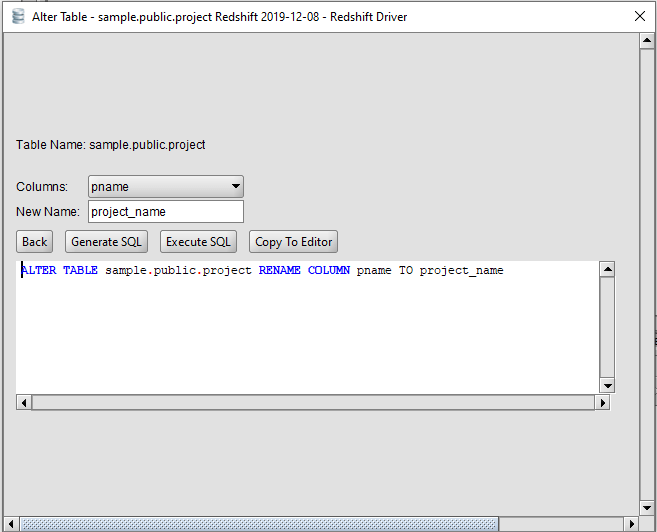

To read more visit Error: Can’t rename columns that don’t exist. There were no longer any error messages in the RStudio console. We’ve constructed a new data frame with modified variable names, as displayed. To ensure that we use the plyr package’s function, we must include the package’s name in front of the function, as seen below.īoosting in Machine Learning-Complete Guide » finnstats df1<- plyr::rename(df, c("X" = "col1",įree Data Science Books » EBooks » finnstats
#Rename column in r how to
This example shows how to fix problems with the rename function, such as when R utilizes the wrong package’s rename function. Approach 2: Resolve the Error: Columns that do not exist cannot be renamed. The preceding R code, on the other hand, is designed to use the plyr package’s rename function and hence returns an error notice.

The reason for this is that both plyr and dplyr provide a rename function.īecause we loaded the dplyr package last, the R programming language tries to use the dplyr package’s rename function.įree Data Science Course-Online 2022 » finnstats Unfortunately, the “Error: Can’t rename columns that don’t exist.” message appears in the RStudio console. df1<- rename(df, c("X" = "col1","Y" = "col2"))Įrror: Can't rename columns that don't exist.
#Rename column in r code
Then we may try running the R code below. Let’s say we wish to use the rename function to rename the column names in our data frame. Rename Multiple column at once using rename () function: Renaming the multiple columns at once can be accomplished using rename () function.
#Rename column in r install
We’ll show you how to recreate the “Error: Can’t rename columns that don’t exist.” in R in this example.įirst, we need to install and load the plyr package first.īias Variance Tradeoff Machine Learning Tutorial » finnstats #install.packages("plyr") either treedata or phylo param data data frame param key column in data.

df <- ame(X = 5:1,ĥ 1 e Approach 1: Reproduce the Error: Columns that don’t exist can’t be renamed. In GuangchuangYu/treeio: Base Classes and Functions for. Principal Component Analysis in R » finnstats Example Data Generationįor this R programming tutorial, we’ll start with the following data. appeared first on finnstats.Įrror: Can’t rename columns that don’t exist., In this article, you’ll discover how to replicate and diagnose the R programming error “Error: Can’t rename columns that don’t exist.” If you want to read the original article, click here Error: Can’t rename columns that don’t exist.Īre you looking for the latest Data Science Job vacancies then click here The post Error: Can’t rename columns that don’t exist. How can I rename this added column within the modelsummary if I rename the vector/dataframe outside the modelsummary this would not be ideal as I need to add multiple columns with shared names but different values.The post Error: Can’t rename columns that don’t exist. This works, however it will give me an arbitrary column name. I now will add a column of values to the table using the argument add_columns(ame(c("x","","x","","",""))) = "), estimate = "estimate", fmt = fmt_statistic(p.value = fmt_sprintf("%.2e"))) Tab <- modelsummary(list("HP" = reg1, "WT" = reg2, "GEAR" = reg3),stars = TRUE, statistic = c("s.e. You can use these names instead of the index number to select values from a vector. Using names as indices These row and column names can be used just like you use names for values in a vector. Use the dimnames () function to extract or set those values. I plot the summary of the two regressions in a table such as the following: R stores the row and column names in an attribute called dimnames. Reg3 <- feols(gear ~ vs + am + qsec | carb, data = mtcars) Reg2 <- feols(wt ~ vs + am + qsec | carb, data = mtcars) Reg1 <- feols(hp ~ vs + am + qsec | carb, data = mtcars) Suppose I have a table summarizing regressions using the modelsummary package such as the following: library(fixest)


 0 kommentar(er)
0 kommentar(er)
